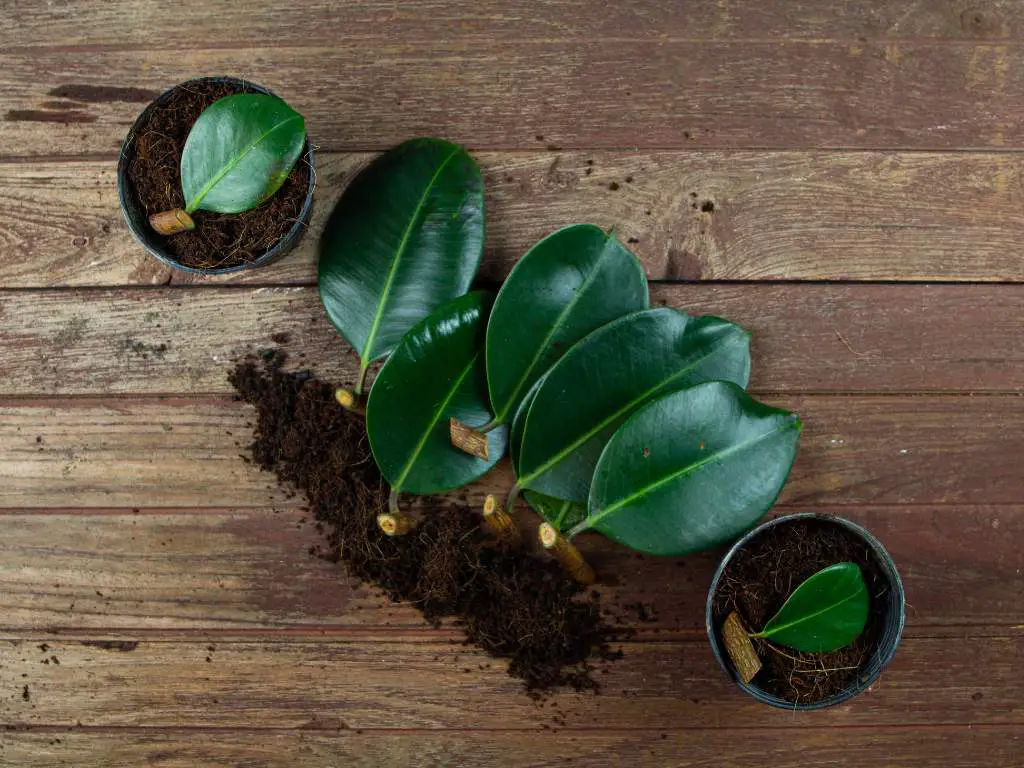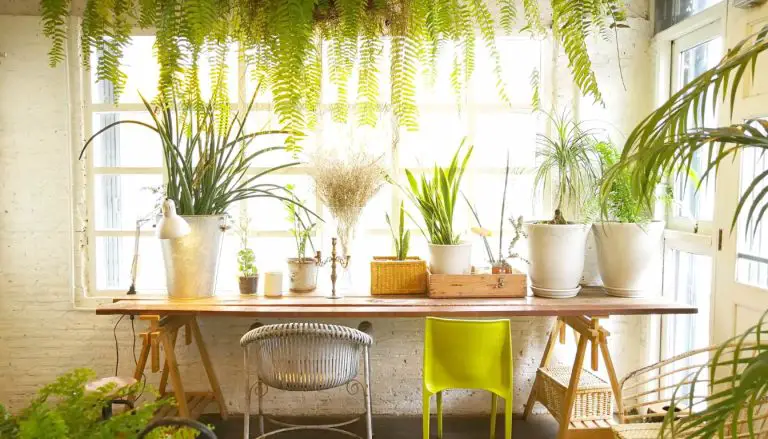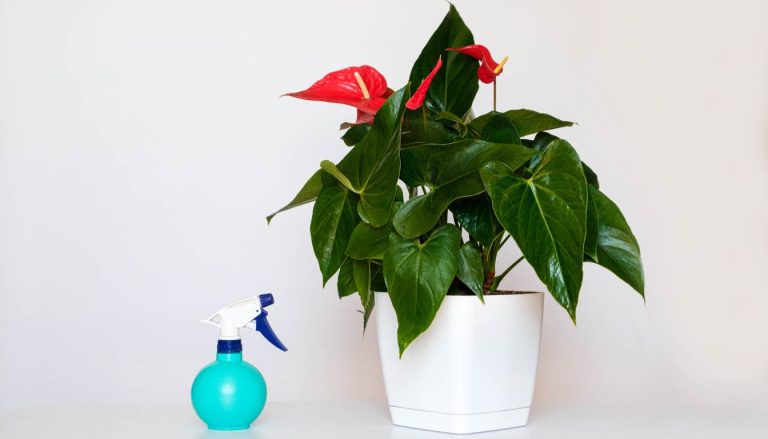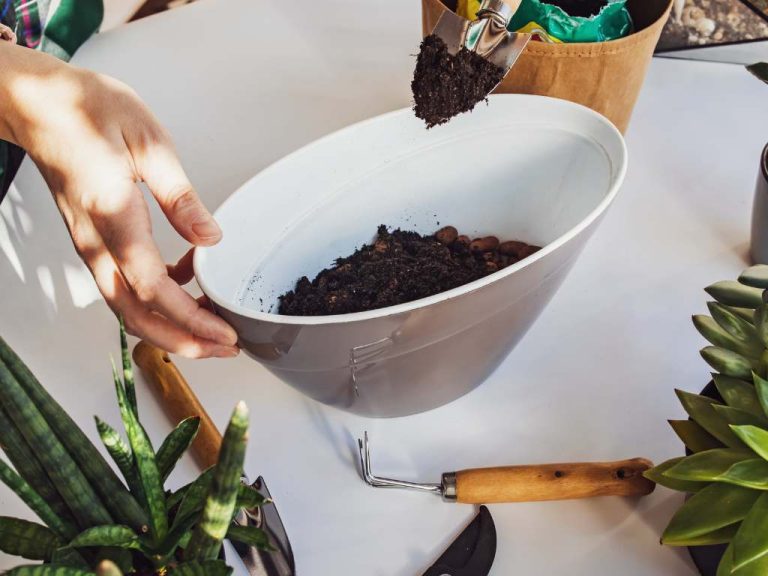Mastering Indoor Plant Cuttings: A Complete Guide
If you’re an indoor gardening enthusiast, you already know how rewarding it is to watch your plants thrive and grow. But have you considered propagating your indoor plant cuttings to expand your collection? Propagation is an affordable and satisfying way to grow your collection of indoor plants and share them with your friends and family.
Plant propagation might seem daunting to beginners, but with the right tools, knowledge, and patience, you’ll be able to propagate indoor plant cuttings with ease. This guide will take you step-by-step through the entire process, from selecting and preparing your cuttings to planting and caring for your new plants.
By the end of this comprehensive guide, you’ll have the knowledge and skills needed to successfully propagate indoor plant cuttings and create a thriving indoor garden.
Understanding Indoor Plant Propagation
If you are an indoor gardening enthusiast, you are likely familiar with the process of propagating plants from cuttings. This method of growing new plants from existing ones is a popular way to expand your indoor garden without having to purchase new plants. Growing plants from cuttings is also an excellent way to preserve the genetics of your favorite plants.
One of the reasons that indoor plant propagation is so popular is that many plants are relatively easy to propagate. With the right tools and techniques, even novice gardeners can successfully grow new plants from cuttings. Some of the best indoor plants to propagate include:
| Plant Name | Description |
|---|---|
| Pothos | A trailing vine with heart-shaped leaves that comes in a variety of colors. |
| Spider Plant | A plant with long, green leaves that produce small, white flowers. |
| Jade Plant | A succulent with thick, fleshy leaves that is easy to care for. |
These plants are known for their ability to root easily from cuttings, making them an excellent choice for indoor gardeners looking to expand their collection.
Why Grow Plants from Cuttings?
There are several benefits to growing plants from cuttings as opposed to starting from seeds. For one, the new plants will have the same genetics as the parent plant, ensuring that you get the same characteristics and features that you love. Additionally, many plants can be challenging to grow from seed, making propagation a more accessible option for some gardeners.
Another benefit of growing plants from cuttings is that it can be a cost-effective way to expand your indoor garden. Rather than purchasing new plants, you can propagate your existing ones to create more plants for free.
If you are new to indoor gardening or propagation, don’t worry! In the following sections, we’ll take a closer look at the steps you need to take to successfully propagate indoor plants from cuttings.
Preparing for Indoor Plant Propagation
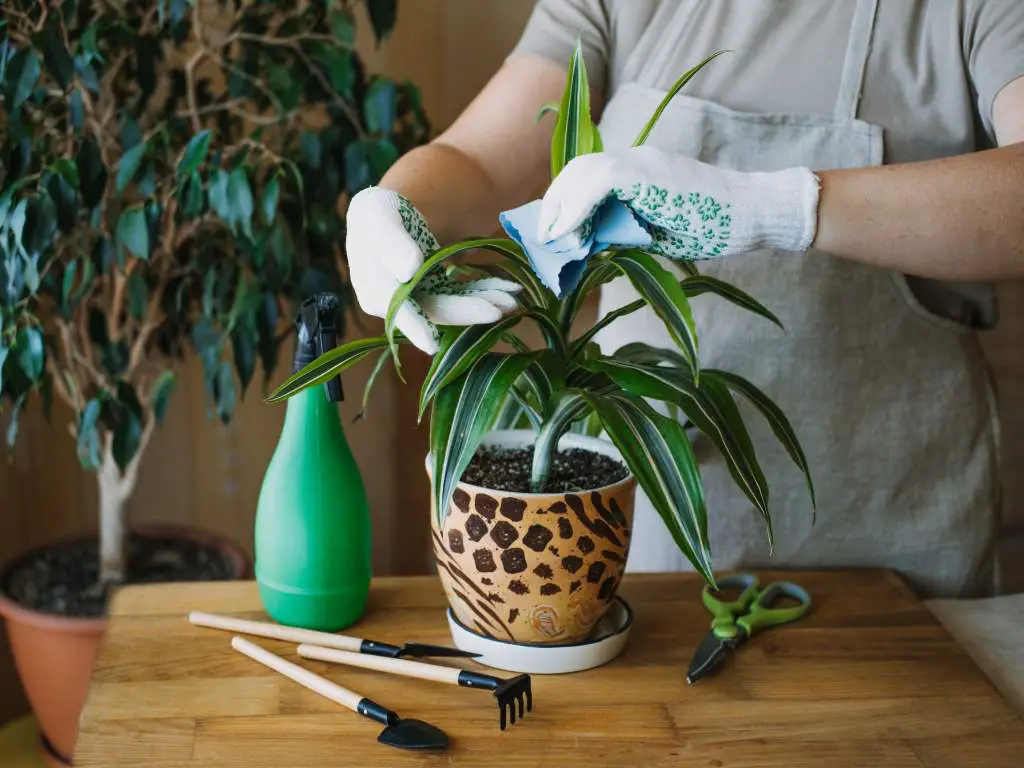
Propagating indoor plant cuttings can be a fun and rewarding experience, but proper preparation is essential to ensure success. By following these tips, you can set yourself up for a successful propagation process:
Selecting the Right Tools and Materials
Before starting, make sure you have all the necessary tools and materials on hand. Here are a few items you may need:
| Tool/Material | Purpose |
|---|---|
| Pruning shears | To take cuttings from the parent plant |
| Rooting hormone | To help the cuttings develop roots |
| Rooting medium (e.g. perlite, vermiculite, or peat moss) | To provide a moist and well-draining environment for the cuttings |
| Clean containers with drainage holes | To hold the rooting medium and cuttings |
Preparing the Cuttings
After you’ve gathered your tools and materials, it’s time to prepare your cuttings. Here are the steps you should follow:
- Choose a healthy parent plant and use clean pruning shears to take several cuttings from the plant. Each cutting should be 4-6 inches long and have at least 2-3 leaves attached.
- Remove the lower leaves from the cuttings, leaving only 1-2 leaves at the top.
- If using a rooting hormone, dip the cut end of each cutting into the hormone powder, tapping off any excess.
Choosing the Right Indoor Plant Cuttings
When it comes to indoor plant propagation, not all cuttings are created equal. To increase your chances of successful propagation, it’s important to choose the right type of cutting and understand the different methods of propagation.
The two most common methods of indoor plant propagation are water propagation and soil propagation. Water propagation involves rooting the cuttings in water before transferring them to the soil, while soil propagation involves rooting them directly in the soil.
Some indoor plants are better suited for water propagation, while others thrive in soil propagation. For example, succulents and cacti do best with soil propagation, while pothos and philodendrons can be propagated successfully through both methods.
| Indoor Plant Variety | Propagation Method |
|---|---|
| Succulents and Cacti | Soil Propagation |
| Pothos and Philodendrons | Water Propagation or Soil Propagation |
| Fiddle Leaf Fig | Water Propagation |
| Spider Plant | Water Propagation |
It’s important to note that some plants are more difficult to propagate than others. For example, plants with woody stems or thick leaves may require more patience and expertise to propagate successfully.
In general, it’s best to start with plants that are relatively easy to propagate, such as pothos or spider plants, before moving on to more challenging varieties.
Rooting Indoor Plant Cuttings
Rooting indoor plant cuttings is the process of encouraging the cuttings to grow roots, which allows them to develop into healthy, thriving plants. Proper preparation and care are essential for successful propagation. Here’s a step-by-step guide to rooting indoor plant cuttings:
Select the Right Rooting Medium
Choosing the right rooting medium is crucial for successful indoor plant propagation. A rooting medium is the material in which the cuttings are planted to encourage root growth. The most common rooting mediums for indoor plant cuttings are:
| Rooting Medium | Pros | Cons |
|---|---|---|
| Water | Allows you to monitor root growth | Requires frequent changing to prevent mold growth |
| Peat Moss | Holds moisture well | May be difficult to find |
| Vermiculite | Retains moisture and provides good aeration | Can be expensive and dusty |
| Perlite | Provides good aeration and drainage | Does not hold moisture well |
Provide Optimal Conditions for Root Development
Proper conditions are essential for the roots to develop and grow. Here’s what you need to do:
- Place the cuttings in a bright location, but out of direct sunlight
- Maintain a consistently warm temperature of 65-75°F
- Keep the rooting medium moist, but not waterlogged
- Use a plastic bag or a humidity dome to maintain high humidity around the cuttings
Monitor Progress
It’s essential to monitor the progress of your cuttings to ensure they’re developing roots and growing into healthy plants. Here are some signs to look for:
- White roots emerging from the cuttings
- New growth indicates the cutting has developed roots and is growing
- No signs of mold or rot
Caring for Rooted Indoor Plant Cuttings
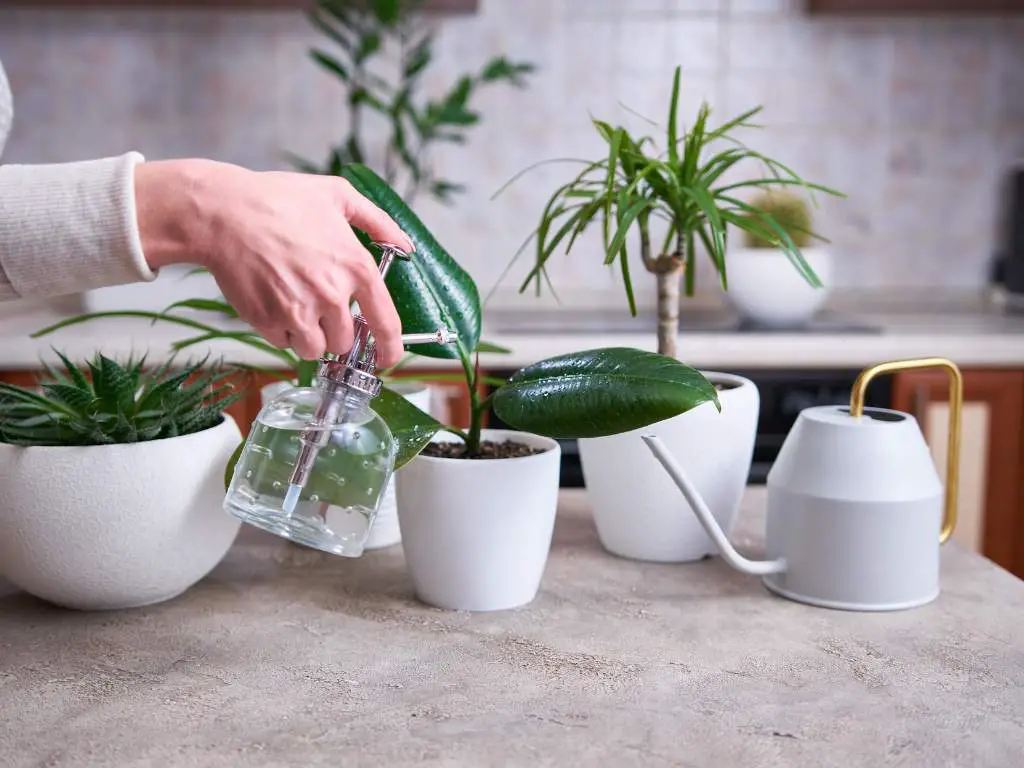
Congratulations! Your indoor plant cuttings have successfully rooted, and you’re on your way to growing healthy and thriving plants. But now what?
Proper care is essential to ensure your newly rooted cuttings continue to grow and develop. Here are a few key tips for caring for your indoor plant cuttings:
“Remember, growing plants is a marathon, not a sprint. Take your time and be patient as your cuttings develop into beautiful plants.”
Watering
Watering is perhaps the most critical aspect of caring for your indoor plant cuttings. While it’s essential to keep the soil moist, it’s equally important not to overwater. Overwatering can lead to root rot and other issues that can impede plant growth.
As a general rule, keep the soil consistently moist but not waterlogged. Check the soil regularly and water only when the top inch feels dry to the touch.
Read – DIY Automatic Watering System For Indoor Plants
Fertilizing
Fertilizing can help your newly rooted indoor plant cuttings grow faster and stronger. However, it’s important to use the right type of fertilizer and apply it properly to avoid damaging the plants.
Choose a balanced, water-soluble fertilizer and follow the instructions carefully. Start with a weak solution, gradually increasing the strength over time.
Light and Humidity
Light and humidity are also essential factors in caring for rooted indoor plant cuttings. Most indoor plants prefer bright, indirect light, but be sure to research the specific light requirements of your plant to ensure optimal growth.
Humidity is also important, particularly for plants that prefer tropical environments. To increase humidity, consider placing a humidity tray or a small humidifier near your plants.
Best Indoor Plants to Propagate
When it comes to propagating indoor plants, some are easier to grow from cuttings than others. Here are a few of the best indoor plants to propagate:
| Plant Name | Propagation Method |
|---|---|
| Pothos | Stem Cuttings |
| Spider Plant | Pups |
| Snake Plant | Leaf Cuttings |
| ZZ Plant | Stem Cuttings |
With these tips and tricks, you’re well on your way to mastering indoor plant cuttings and creating a thriving indoor garden. Happy propagating!
Troubleshooting Common Issues
Despite your best efforts, issues may arise during the indoor plant propagation process. Here are some common problems you may encounter and tips for troubleshooting them:
Drooping or Wilting Cuttings
If your indoor plant cuttings are drooping or wilting, it may be due to underwatering. Make sure the soil is moist but not waterlogged, and keep the cuttings in a humid environment. You can also try misting the leaves with water to help them retain moisture.
No Root Growth
If your indoor plant cuttings are not showing signs of root growth, it could be due to several factors. Check that the cutting is healthy and has at least one leaf node. Make sure the rooting medium is moist but not waterlogged, and ensure the cuttings are receiving enough light. You can also try using a rooting hormone to stimulate root growth.
Fungus or Mold Growth
Fungus or mold growth on indoor plant cuttings can be a sign of excessive moisture or poor air circulation. Make sure you’re not overwatering the cuttings, and provide good ventilation to prevent the buildup of humidity. If the problem persists, try using a fungicide spray to eliminate the mold or fungus.
Yellowing Leaves
Yellowing leaves on indoor plant cuttings can be a sign of underwatering or overwatering. Check the soil moisture and adjust watering accordingly. Yellowing leaves can also be a sign of nutrient deficiencies, so make sure you’re providing the cuttings with the proper fertilizer.
Remember, indoor plant propagation is not an exact science, and it may take some trial and error to get it right. Don’t be discouraged if your first attempts are not successful, and always be willing to learn and try new techniques.
Transplanting Rooted Indoor Plant Cuttings
Once your indoor plant cuttings have successfully rooted, it’s time to transplant them into their desired containers or growing locations. Transplanting can be a delicate process, but with the right tools and techniques, you can ensure the continued growth and success of your plants.
The first step in transplanting your rooted cuttings is to select the right container or growing location. Consider the plant’s size, light requirements, and soil preferences when choosing a new home. Make sure the container has drainage holes to prevent overwatering and fill it with a high-quality potting mix that provides adequate nutrients and drainage.
Before transplanting, gently remove the rooted cutting from its current container or rooting medium. Be careful not to damage the new roots, as this can set back growth and development. Use a small spoon or trowel to loosen the soil around the roots before gently lifting the cutting from its container.
Once you have removed the cutting, place it in the new container or growing location and add potting mix around the roots, gently pressing down to ensure the cutting is stable. Water the plant thoroughly to help it adjust to its new environment, and continue to monitor its growth and development.
Transplanting Indoor Plants from Water to Soil
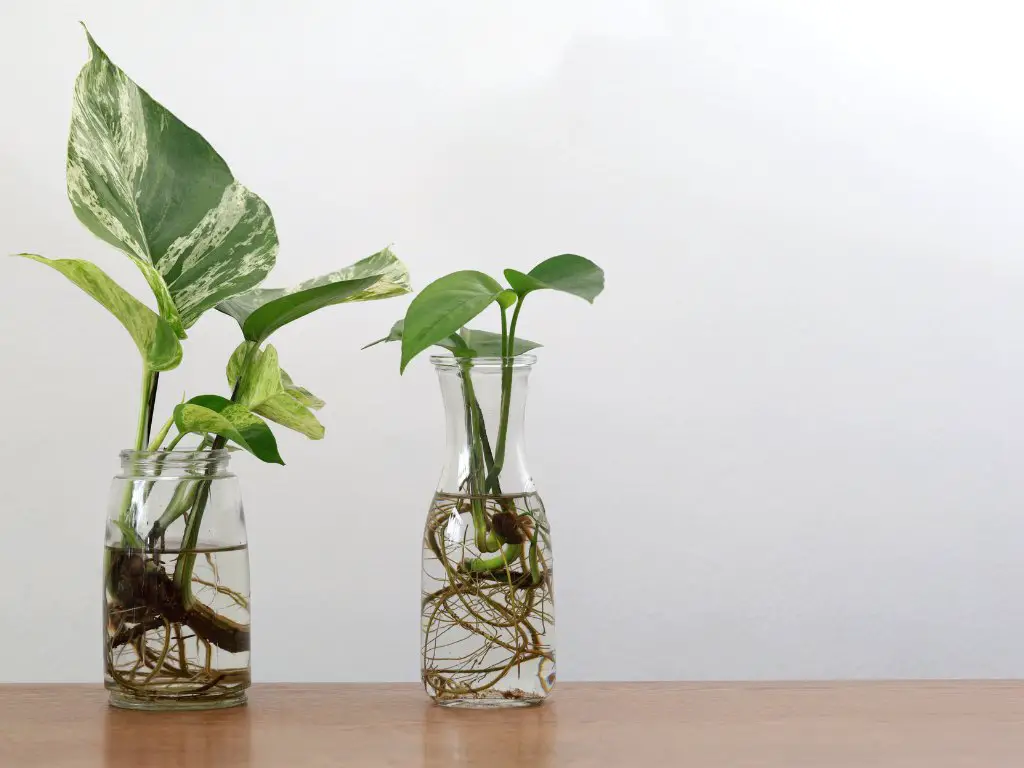
If you have propagated your indoor plant cuttings in water rather than a rooting medium, you’ll need to take an additional step before transplanting. Before transferring the cutting to the soil, allow it to adjust gradually to a drier environment. Start by reducing the frequency of water changes until the cutting is only in the water for a few hours each day, then gradually increase the amount of time it spends out of the water.
Once the cutting has adjusted to a drier environment, it’s time to transplant to soil. Carefully remove the cutting from the water and gently shake off any excess moisture. Follow the same steps as above for selecting a container, preparing the potting mix, and transplanting the cutting.
Success Tips for Transplanting Rooted Indoor Plant Cuttings
“Transplanting your indoor plant cuttings can be nerve-wracking, but with proper care and attention, they can thrive in their new home. Remember to choose the right container, provide adequate drainage, and use a high-quality potting mix. Be gentle when transplanting to avoid damaging the new roots, and give your plants time to adjust to their new environment.”
Expanding Your Indoor Garden
Now that you’ve mastered the art of indoor plant propagation, it’s time to start expanding your indoor garden! Growing plants from cuttings is a cost-effective and rewarding way to add more green to your space.
One of the best indoor plants to propagate is the pothos. This plant is incredibly easy to propagate and thrives in a variety of lighting conditions. Simply cut a stem with several leaves and place it in water until the roots start to grow. From there, you can transplant it into soil or keep it in a vase of water.
Experiment with Different Plants
While pothos is a great plant to start with, don’t be afraid to experiment with different plants! Spider plants, jade plants, and wandering jew are also great candidates for indoor plant propagation.
Make sure to research the specific propagation methods for each type of plant, as they may vary. For example, succulents are typically propagated through leaf cuttings, while other plants may require stem cuttings.
Creating a Stunning Display
As you add more plants to your collection, you can create a stunning display by arranging them in different ways. Consider grouping plants of similar sizes and colors, or arranging them in a hanging basket for a unique look.
Remember to balance your indoor garden with proper lighting and humidity, and make sure to water and fertilize your plants regularly. With time and care, your indoor garden will continue to grow and thrive!
FAQ
What is indoor plant propagation?
Indoor plant propagation is the process of growing new plants from cuttings taken from existing indoor plants. It involves taking a portion of the original plant, such as a stem or leaf, and encouraging it to develop roots and grow into a new, independent plant.
Why is propagating indoor plants from cuttings popular?
Propagating indoor plants from cuttings is a popular method among indoor gardeners because it allows them to expand their plant collection without having to purchase new plants. It is also a cost-effective way to create duplicates of favorite plants or share plants with friends and family.
What are the best indoor plants to propagate?
Some of the best indoor plants to propagate include pothos, spider plants, philodendrons, snake plants, and succulents. These plants are known for their adaptability and ability to thrive in a variety of indoor conditions, making them ideal candidates for successful propagation.
How do I prepare indoor plant cuttings for propagation?
Before propagating indoor plant cuttings, it’s important to prepare them properly. Start by selecting healthy, disease-free cuttings from the parent plant. Remove any excess leaves or flowers from the cutting, leaving only a few leaves at the top. Trim the stem at an angle and remove any lower leaves that would be submerged in water or planting medium.
What is the best method for rooting indoor plant cuttings?
The best method for rooting indoor plant cuttings depends on the type of plant and personal preference. Some common methods include water propagation, using rooting hormone and planting the cutting in soil or a mixture of soil and perlite, and air layering. Experiment with different methods to see which works best for your plants.
How do I care for rooted indoor plant cuttings?
Caring for rooted indoor plant cuttings involves providing them with appropriate amounts of water, light, and nutrients. Water the cuttings when the top inch of soil feels dry, and make sure they receive adequate sunlight or artificial light. Avoid overwatering or exposing them to harsh temperatures.
What should I do if problems arise during the propagation process?
If problems arise during the propagation process, there are several troubleshooting steps you can take. Common issues include rotting stems, wilting leaves, or lack of root development. Adjusting watering practices, improving lighting conditions, or using a rooting hormone can often help resolve these problems.
When should I transplant rooted indoor plant cuttings?
Once your rooted indoor plant cuttings have developed a healthy root system, usually after a few weeks, they can be transplanted into their desired containers or growing locations. Make sure the new containers have adequate drainage and provide the appropriate soil or planting medium for each plant type.
Can I continue to propagate indoor plants after the initial process?
Yes, once you’ve mastered the art of indoor plant propagation, you can continue to propagate indoor plants to expand your collection. With practice, you’ll become more skilled at identifying the best cuttings and choosing the right methods for propagating each plant variety.
- 20+ Chic Boho Bedroom Ideas for a Cozy and Stylish Retreat - June 20, 2024
- 12+ Modern Boho Living Room Ideas to Create a Unique Oasis - June 10, 2024
- 10 Stunning Canopy Bed Ideas for a Dreamy Escape - May 16, 2024

